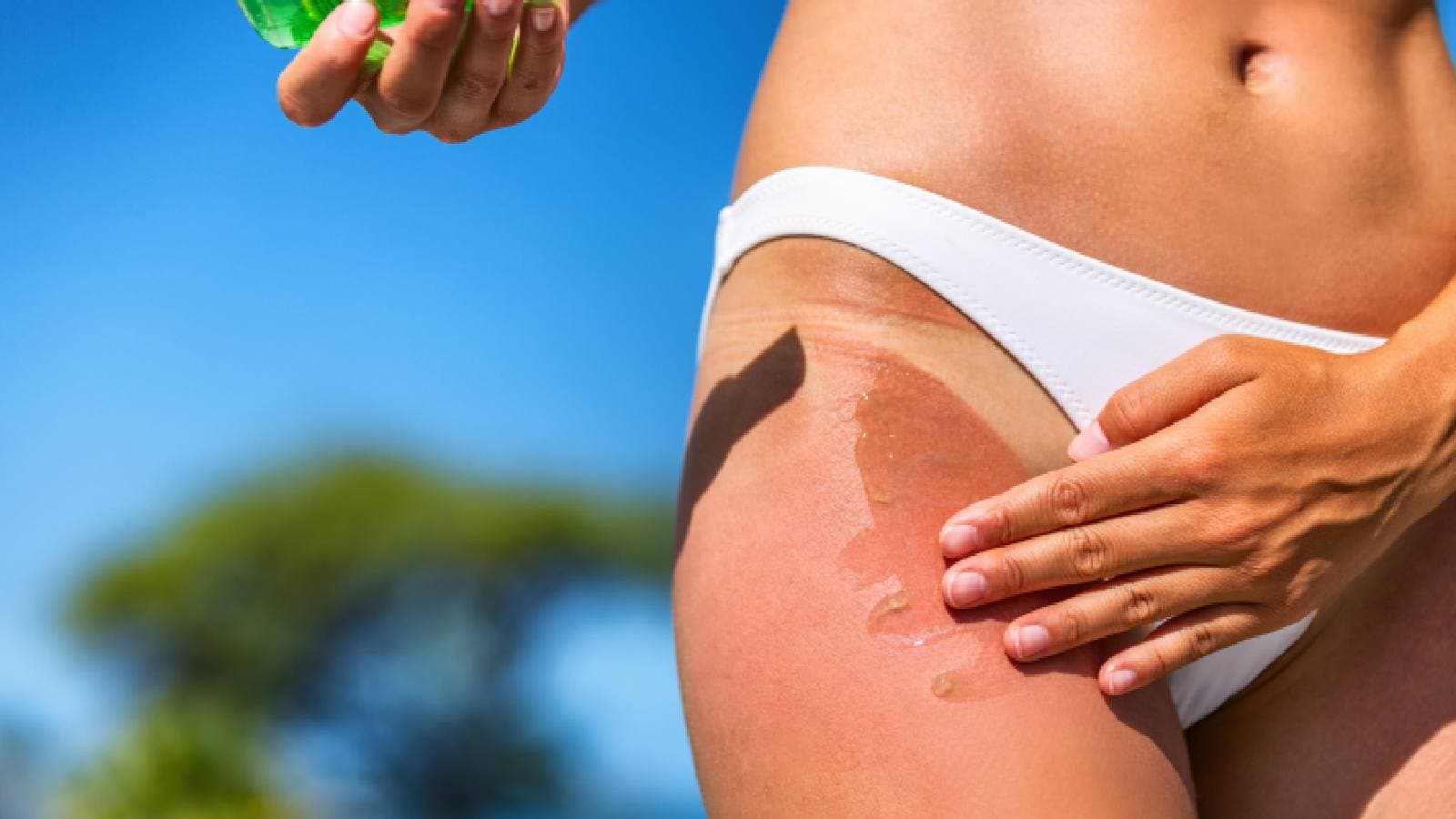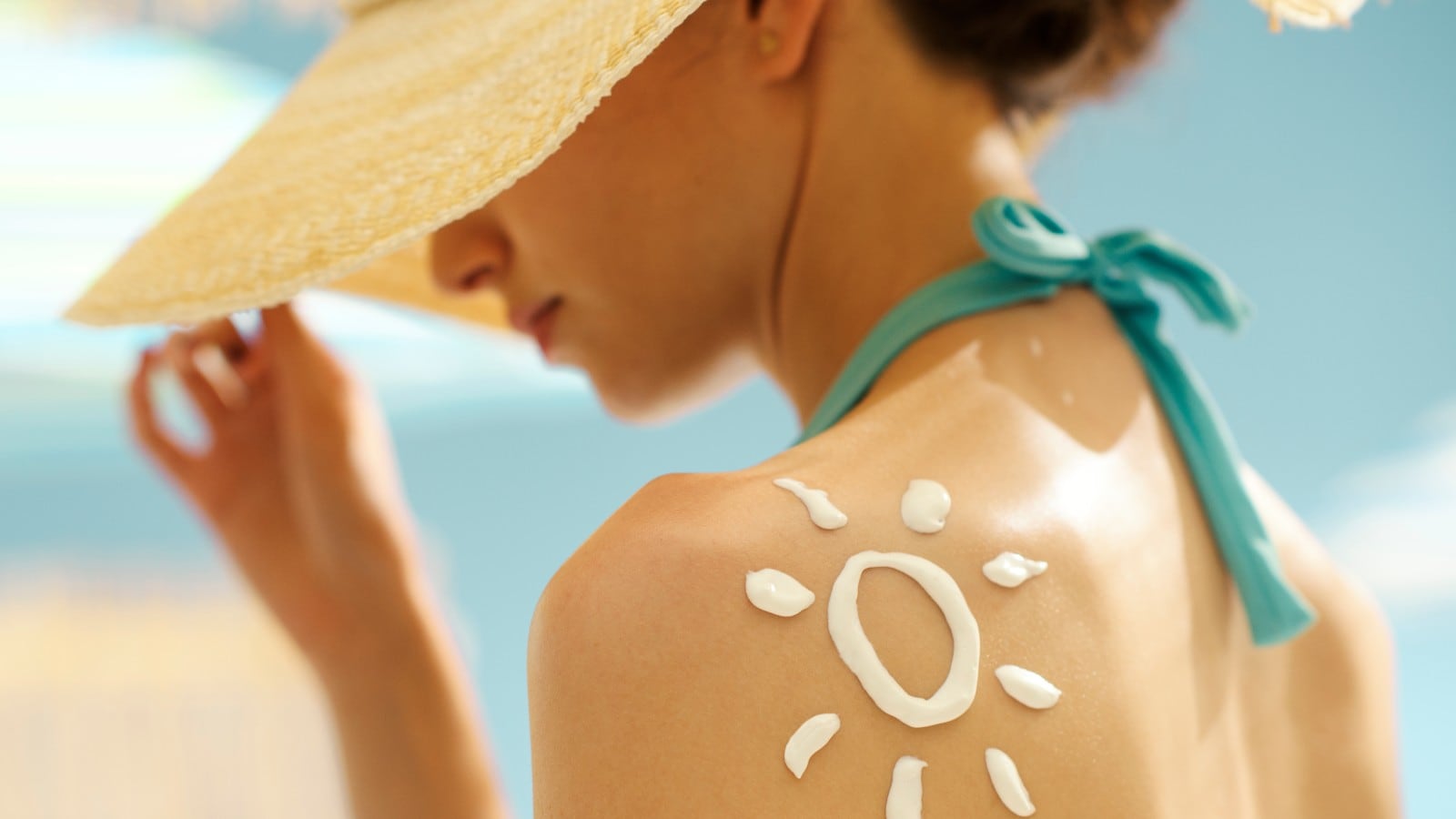
You may not feel like stepping out due to the heat, but you can’t completely ignore the sun. And if your skin gets too much sun sans sunscreen and sun-protective clothes, you can end up with a sunburn. Apart from the sun’s ultraviolet (UV) rays, UV light from artificial sources like a tanning bed can also lead to red, painful, damaged skin. Unprotected exposure to the sun can also lead to sun poisoning, which may initially feel and look like a sunburn. So, are the two different skin problems?
It is a type of skin damage caused by overexposure to UV rays from the sun or something artificial like a tanning bed. Sunburn is experienced by more than a third of the population every year, according to research published in StatPearls. When the unprotected skin absorbs too much UV rays, it becomes red, inflamed and painful. “Sunburn is essentially an inflammatory reaction to direct DNA damage in skin cells,” says dermatologist Dr Sunita Naik.

It is not a medically defined skin condition, but is used to describe a severe form of sunburn that results from prolonged exposure to UV rays. “It is often used to describe sunburn that is accompanied by symptoms like nausea, headache, dehydration, fever, chills, dizziness or even a rash,” says the expert. It reflects an extreme reaction of the body to too much sun exposure and may resemble an allergic reaction or heat-related illness.
While both sunburn and sun poisoning result from overexposure to the sun’s ultraviolet rays, there are a few differences:
Sunburn is a superficial skin condition caused by UV rays. It leads to redness, pain, and sometimes peeling, and usually remains localised to the skin. Sun poisoning, although not a clinical term, refers to a more severe reaction to the sun. It involves symptoms such as nausea, headache, fever and chills, alongside skin damage.
Sunburn typically lasts 3 to 7 days, depending on severity. Sun poisoning symptoms can persist longer, often over a week, especially if systemic symptoms like dehydration or fever are involved.
Common risk factors for both include regularly exposing skin with protection to UV rays, swimming in the sun and having a history of sunburn. Additional risk factor for sun poisoning includes taking medications tetracycline that increase photosensitivity. Tetracycline, which is a broad-spectrum antibiotic used to treat infectious and dermatological issues, may lead to photosensitivity reactions, as per research published in Dermatologic Therapy.
Here are the symptoms of sunburn and sun poisoning:
Sunburn symptoms (affect only the skin):
Sun poisoning symptoms (affect both skin and whole body):
The symptoms start with a red rash and can progress to the following:
“In severe cases, hospitalisation may be needed, especially if organs start reacting to overheating or dehydration,” says Dr Naik.
Both conditions start with protecting the skin from further UV exposure and cooling the affected area, but treatment differs based on severity and symptoms.
Sunburn treatment (usually manageable at home):
Sun poisoning treatment:
Apart from opting for the sunburn treatment, you may also need:

Here’s when seeing a doctor is crucial:
Sun poisoning is a severe form of sunburn that does not only affect the skin. It can lead to severe skin damage, and you may also experience systemic symptoms.
Yes, it is possible. Some individuals may experience systemic symptoms like rash, dizziness or nausea after sun exposure. However, sun poisoning mostly includes at least some visible signs of sunburn.
Sunscreen helps prevent both sunburn and sun poisoning when used properly. A broad-spectrum sunscreen with an SPF of 30 or higher blocks both UVA and UVB rays, reducing the risk of skin damage and systemic reactions.
Sometimes, yes. After the redness and peeling associated with a mild sunburn subside, the skin may develop a tan as a result of increased melanin production. This is the body’s way of protecting itself from further UV damage.
Coconut oil can help soothe skin after the initial inflammation subsides but should not be applied immediately to a fresh sunburn. It may trap heat and worsen inflammation. Once the heat has dissipated (typically after 24–48 hours), coconut oil can help moisturise the skin and aid healing by reducing dryness and peeling.
Get latest updates on health and wellness along with Beauty, Hair Care, Natural Cures, Skin Care
Disclaimer: At Health Shots, we are committed to providing accurate, reliable, and authentic information to support your health and well-being. However, the content on this website is intended solely for informational purposes and should not be considered a substitute for professional medical advice, diagnosis, or treatment. Always consult a qualified healthcare provider for personalised advice regarding your specific medical condition or concerns.